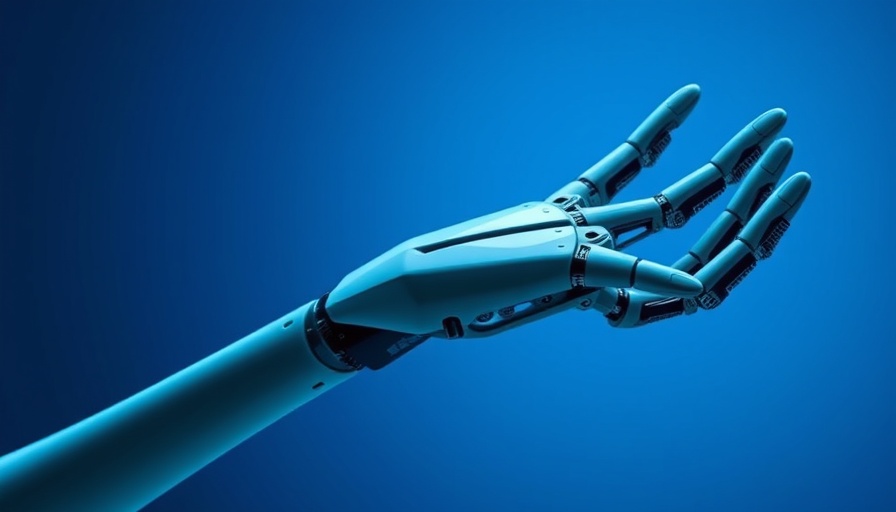
UK’s New Frontier in Robotics: The Rise of Synthetic Muscles and E-skin Technology
The British Advanced Research and Invention Agency (ARIA) is embracing the future of robotics by funding groundbreaking advancements in synthetic muscles and electronic skin (e-skin) technology. This initiative, which has garnered significant attention, highlights the critical need to enhance robotic dexterity to match human capabilities.
Bridging the Gap Between Software and Hardware
With a funding allocation of £52 million, ARIA aims to empower ten selected teams tasked with improving the physical dexterity of robots. As the technology landscape rapidly evolves, there exists a crucial gap between advancements in artificial intelligence and the physical capabilities of robotic systems. This disparity limits the practical applications of robotics in various fields, from healthcare to manufacturing.
Interestingly, traditional robotic systems have often struggled to achieve the flexibility, precision, and responsiveness found in human manipulation. While AI capabilities have progressed tremendously, the physical constraints of robotic systems have not kept pace. ARIA’s initiative seeks to close this divide, highlighting an urgent need for innovative projects that can effectively integrate soft robotics with advanced computational technologies.
Key Innovations in Soft Robotics
Recent developments in soft robotics leverage biomimetic designs to create robots that exhibit human-like dexterity. Highlighting these innovations is research on e-skin technology, as reported by the University of Texas at Austin. Their stretchable e-skin achieves human-level touch sensitivity, enabling robots to perform tasks requiring precision and gentle contact, as defined in research published in Matter.
This new e-skin prototype, distinct from earlier iterations, retains its sensing accuracy even when stretched, addressing a major issue that plagued e-skin technologies. The innovative hybrid response pressure sensor employed enables both capacitive and resistive responses, allowing the skin to maintain sensitivity amid changes in shape. Such advancements could lead to robots capable of delicate operations in medical settings, such as performing protocols that require both care and precision.
Medical Applications: A Promising Future
The implications for the medical field are profound. Soft robots, equipped with synthetic muscles and e-skin, could transform patient care. They can assist in monitoring conditions such as bladder dysfunction and even facilitate complex procedures like electrical stimulation of cardiac functions.
A particularly noteworthy example features soft robotic grippers designed for continuous bladder volume assessment and voiding. Utilizing feedback loops within a closed-control system, these devices can provide real-time insights that enhance patient care by addressing urinary dysfunction efficiently.
Real-World Applications and Societal Implications
Certain researchers envision a future where nursing robots equipped with human-like soft skills could alleviate the growing challenge of healthcare shortages as populations age. Recent research highlights this need, emphasizing the role of robots in managing tasks that require tender care, ultimately ensuring that human touch and empathy remain integral even in technology-driven healthcare scenarios.
Moreover, the possibilities extend beyond healthcare. Such technology can be adapted for disaster response, where robots might deliver care to victims trapped in precarious situations, embodying a new era of humanitarian aid.
Looking Ahead: The Path to Human-Robot Collaboration
The convergence of AI, robotics, and human health environments is rapidly becoming a reality. The ongoing developments in synthetic muscles and e-skin technology signify a robust progression toward creating robots that can not only assist but also augment human capabilities. For companies operating in digital transformation and executive leadership in technological innovation, the takeaway is clear: collaboration with organizations like ARIA could lead to groundbreaking solutions that will shape the future of multiple industries.
As these innovative projects unfold, we stand on the precipice of a revolution in robotics, where the lines between human capabilities and robotic enhancements begin to blur. Stakeholders in technology sectors, from startups to established firms, must remain attentive to these advancements—leveraging opportunities to enhance operations, drive efficiency, and, ultimately, contribute positively to society.
 Add Row
Add Row  Add
Add 




Write A Comment